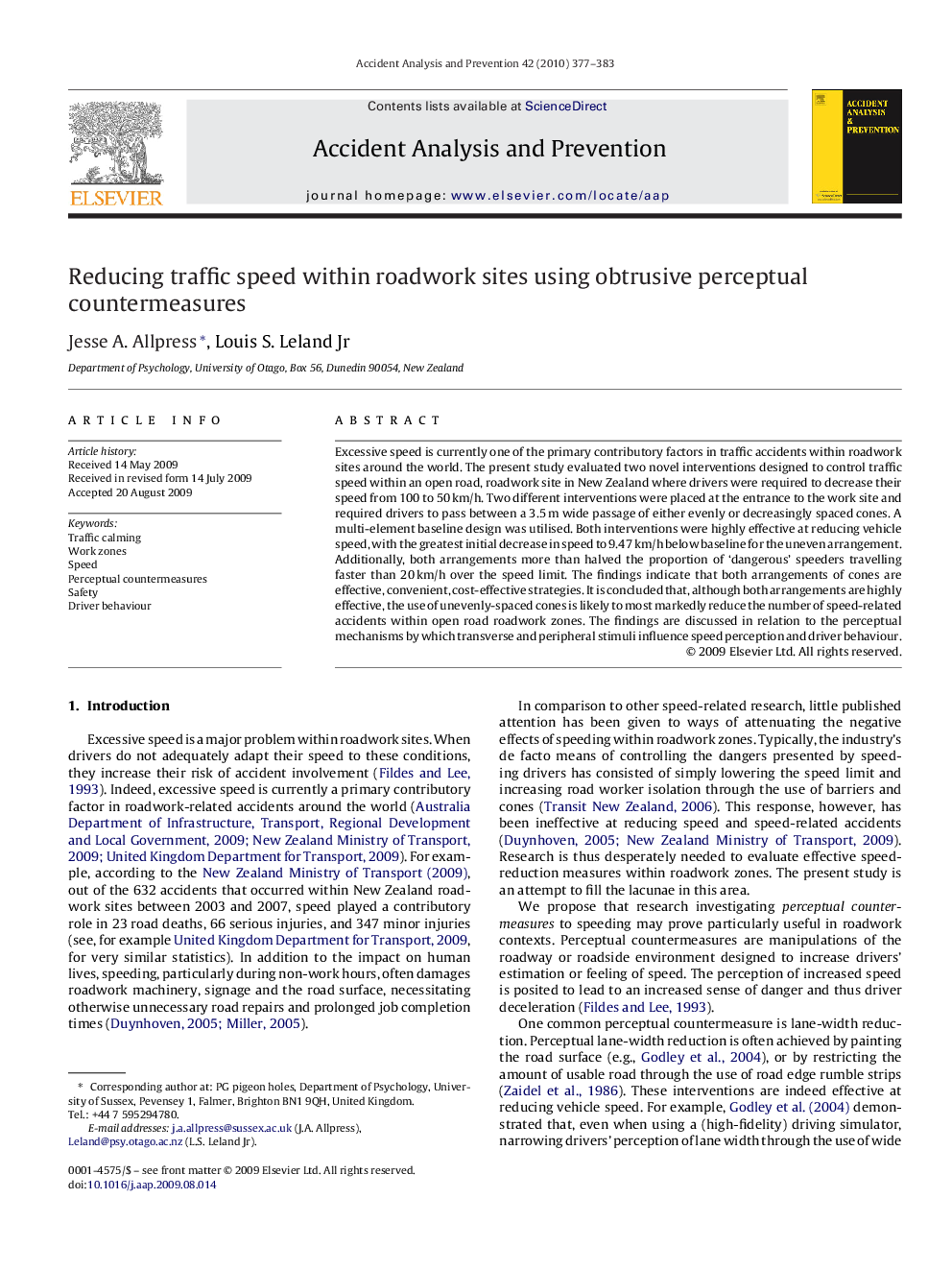| Article ID | Journal | Published Year | Pages | File Type |
|---|---|---|---|---|
| 572932 | Accident Analysis & Prevention | 2010 | 7 Pages |
Excessive speed is currently one of the primary contributory factors in traffic accidents within roadwork sites around the world. The present study evaluated two novel interventions designed to control traffic speed within an open road, roadwork site in New Zealand where drivers were required to decrease their speed from 100 to 50 km/h. Two different interventions were placed at the entrance to the work site and required drivers to pass between a 3.5 m wide passage of either evenly or decreasingly spaced cones. A multi-element baseline design was utilised. Both interventions were highly effective at reducing vehicle speed, with the greatest initial decrease in speed to 9.47 km/h below baseline for the uneven arrangement. Additionally, both arrangements more than halved the proportion of ‘dangerous’ speeders travelling faster than 20 km/h over the speed limit. The findings indicate that both arrangements of cones are effective, convenient, cost-effective strategies. It is concluded that, although both arrangements are highly effective, the use of unevenly-spaced cones is likely to most markedly reduce the number of speed-related accidents within open road roadwork zones. The findings are discussed in relation to the perceptual mechanisms by which transverse and peripheral stimuli influence speed perception and driver behaviour.
